Alameda Trench
Wednesday, 23rd September 2009 by Ian Brown
The Alameda Trench is a 16-km train route which runs 10m below ground-level through the centre of Los Angeles.
Trains descend into the trench near Greenleaf Boulevard in the south and rise back to the surface at 25th Street to the north. It runs parallel to Alameda Street, from which it takes its name.
Before the trench was completed, trains up to 2.5km long would have to slowly pass through around 200 grade-level crossings (i.e. no bridges or tunnels), which resulted in considerable traffic holdups and pollution from stopped vehicles. Since the $2.4billion construction project was completed in 2002, the trench has significantly eased congestion through central Los Angeles.
The struts across the trench - clearly visible from above, and on street view - are intended to maintain the integrity of the concrete walls during California's frequent earthquakes1.
The trench is part of the Alameda Corridor which takes 30-60 trains per day from the ports of Long Beach and Los Angeles to locations across the United States - accounting for up to 1/4 of all consumer products imports. Design and construction is underway for an expansion to the east, into San Gabriel.
Somewhat surprisingly, given the number and length of trains which pass through the trench, none are visible on Google Maps. We can, however, see some on Bing Maps' Bird's Eye View. And this Youtube video gives you a sense of what it's like to travel through the trench which is only used for freight traffic (though some ceremonial passenger trains did run through the Corridor on its opening day).
-
I have to wonder if the struts create a disturbing strobe effect for the train drivers? ↩︎
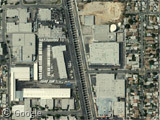
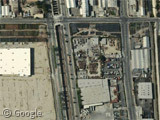
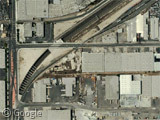
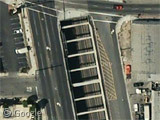
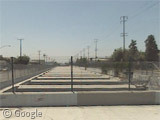
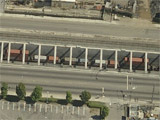
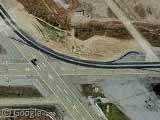
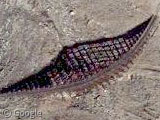
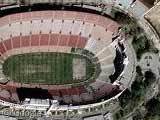
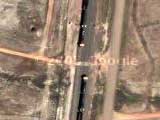
I never figured this trench would be that important to US economy..! One quarter of the imports..! I’ll try to visit the next time I’m on LA.
A nation that so loves the internal combustion engine and for so long hated the railways is now spending $2.4bn on a rail project! I think the British government should take note. The fact its ‘just’ for freight is even more astonishing.
Anyway – on a more mundane note – does anyone know how they managed to build the trench and retain normally running rail traffic?
This is a tricky one: ACTA says that the Alameda Corridor moves 9,766 daily TEU’s, and the average train would have 280 TEU’s (and if those are one over the other, it would be a train with 140 “cars”). So it’s a 16 km long, what its the average speed? and how long it takes to stop the train?. In the Youtube video, the noise that it appears come from the brakes starts at the 1:26 and “ends” in the 2:04.